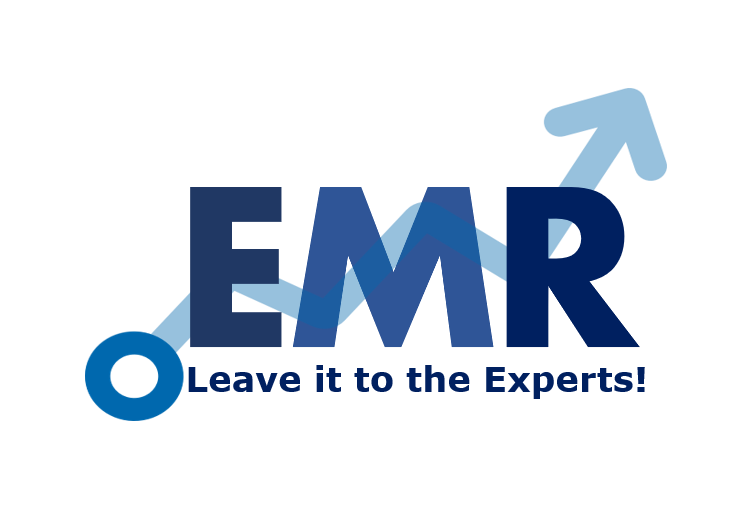Protein Crystallization Market Outlook:
The global protein crystallization market share value was USD 1.4 billion in 2023, driven by the increased investment in biopharmaceutical research and development activities. The market size is anticipated to grow at a CAGR of 8.5% during the forecast period of 2024-2032 to achieve a value of USD 2.49 billion by 2032.
Protein Crystallization: Introduction
Protein crystallization is a laboratory technique used to form solid crystals of proteins. It is a critical step for determining the three-dimensional structure of a protein at atomic resolution, which is
essential for understanding its function and interactions with other molecules. This process begins by purifying the protein and then finding the right conditions for crystal growth, which can be a complex and painstaking task as proteins require very specific environments to form crystals.
Get a Free Sample Report with Table of Contents – https://www.expertmarketresearch.com/reports/protein-crystallization-market/requestsample
Typical variables that must be optimized include pH, temperature, protein concentration, and the presence of various salts or precipitating agents. The protein solution is set up in small volumes and allowed to equilibrate against a reservoir containing a higher concentration of precipitants. Over time, the protein molecules can organize into a repeating array, manifesting as a crystal. These crystals can then be used in X-ray crystallography, where X-rays are diffracted through the crystal to generate patterns that are used to deduce the protein’s structure. Protein crystallization is not only fundamental in structural biology but also in the pharmaceutical industry for drug design, where understanding the structure of target proteins is key to developing new medications.
Key Trends in the Protein Crystallization Market
The global protein crystallization market is experiencing significant growth, driven by key trends that reflect advances in technology and evolving scientific demands. At the forefront is the integration of automation into crystallization processes. Laboratories are increasingly adopting high-throughput automation systems that streamline the setup and monitoring of crystallization trials, markedly increasing the number of experiments that can be managed simultaneously. This automation has become essential for probing the vast space of variables affecting protein crystallization, allowing for rapid and reproducible identification of optimal conditions.
Concurrent with automation is the rise of sophisticated detection and imaging techniques, which have revolutionized how protein crystals are observed and selected. The application of microfluidics technology, for instance, is now more prevalent, minimizing the volume of valuable protein samples required and enabling the precise control of crystallization environments. High-resolution imaging, including automated microscopy, plays a pivotal role in distinguishing promising crystal formations early in the crystallization process, saving time and resources.
Another significant trend is the integration of protein crystallization within the broader context of structural biology. Techniques like X-ray crystallography are being complemented with NMR spectroscopy and cryo-EM, providing a multi-faceted view of protein structures that can be crucial for understanding complex biological mechanisms and for the successful design of therapeutic agents.
The demand for detailed structural information on proteins is also being fueled by the pharmaceutical and biotechnological sectors. Drug discovery and design heavily rely on structural insights obtained from protein crystals, making crystallization a critical step in developing new drugs. Novel reagents and methodologies in protein crystallization are being developed to enhance crystal quality and growth rates, thus facilitating the path from discovery to drug development.
Finally, global health challenges, such as the response to pandemics, have underscored the importance of rapid and reliable protein structural analysis. Protein crystallization is vital in the race to understand pathogenic mechanisms and to develop effective vaccines and treatments, thus reinforcing the market’s expansion. This trend is expected to continue, with the protein crystallization market being an essential contributor to future scientific breakthroughs and therapeutic innovations.
Read Full Report with Table of Contents – https://www.expertmarketresearch.com/reports/protein-crystallization-market
Protein Crystallization Market Segmentations
Market Breakup by Product Type
• Software & Services
• Instruments
• Consumables
Market Breakup by Technology
• Cryo-electron Microscopy
• X-ray Crystallography
• NMR Spectroscopy
• Others
Market Breakup by End User
• Pharmaceutical Companies
• Government Institutes
• Biotechnological Companies
• Others
Market Breakup by Region
• North America
• Europe
• Asia Pacific
• Latin America
• Middle East and Africa
Protein Crystallization Market Overview
The global protein crystallization market is undergoing a dynamic evolution as it becomes increasingly integral to structural biology and drug discovery. Characterized by its role in determining the three-dimensional structures of proteins, the market is buoyed by the demand from the pharmaceutical, biotechnological, and academic research sectors. In response to the need for precise structural elucidation of proteins, the market has seen a substantial influx of investment in advanced crystallization technologies and related analytical tools.
Central to this growth is the trend towards automation and high-throughput methodologies, which allows for more efficient screening of crystallization conditions and faster progression from protein purification to crystal analysis. Sophisticated imaging systems and robotics are now commonplace in crystallization setups, enhancing the speed and accuracy of identifying viable protein crystals. This automation is supported by innovations in microfluidics and controlled environment systems, which are key for managing the delicate variables that influence protein crystallization, such as temperature, pH, and precipitant concentration.
The market is further expanded by the advent of new crystallization reagents and kits, designed to be user-friendly and effective across a broad range of proteins, including those traditionally considered difficult to crystallize. Suppliers and service providers in this space are increasingly offering customized solutions to meet the specific needs of their clients, facilitating the crystallization of novel or challenging proteins.
As research continues to unravel the complexity of protein function and interaction, the importance of high-quality protein crystals for X-ray crystallography, NMR spectroscopy, and cryo-electron microscopy becomes ever clearer. Consequently, the market is not only growing but also becoming more specialized, addressing the intricate requirements of advanced structural biology research.
The global protein crystallization market is also stimulated by the urgent need for structural insights into pathogenic proteins, vital for developing new vaccines and therapies, especially in the face of emerging diseases. The synergy between technological innovation, rising demand for structural data in drug development, and the critical need for understanding disease mechanisms at the molecular level is propelling the market toward sustained growth and expansion.
Protein Crystallization Market: Competitor Landscape
The key features of the market report include patent analysis, grants analysis, clinical trials analysis, funding and investment analysis, partnerships, and collaborations analysis by the leading key players. The major companies in the market are as follows:
• Bruker
• HAMPTON RESEARCH CORP.
• Rigaku Corporation
• Mettler Toledo
• Corning Incorporated
• Jena Bioscience Gmbh
• Creative Proteomics
• Formulatrix
• Greiner Bio-One International Gmbh
• SARomics Biostructures AB
About Us:
Acquire unparalleled access to critical industry insights with our comprehensive market research reports, meticulously prepared by a team of seasoned experts. These reports are designed to equip decision-makers with an in-depth understanding of prevailing market trends, competitive landscapes, and growth opportunities.
Our high-quality, data-driven analyses provide the essential framework for organisations seeking to make informed and strategic decisions in an increasingly complex and rapidly evolving business environment. By investing in our market research reports, you can ensure your organisation remains agile, proactive, and poised for success in today’s competitive market.
Don’t miss the opportunity to elevate your business intelligence and fortify your strategic planning. Secure your organisation’s future success by acquiring one of our Expert Market Research reports today.
Media Contact:
Company Name: Claight Corporation
Contact Person: Jhon Roy, Business Consultant
Email: sales@expertmarketresearch.com
Toll Free Number: US +1-415-325-5166 | UK +44-702-402-5790
Address: 30 North Gould Street, Sheridan, WY 82801, USA
Website: www.expertmarketresearch.com



